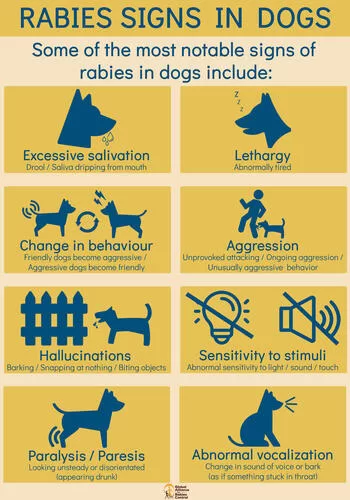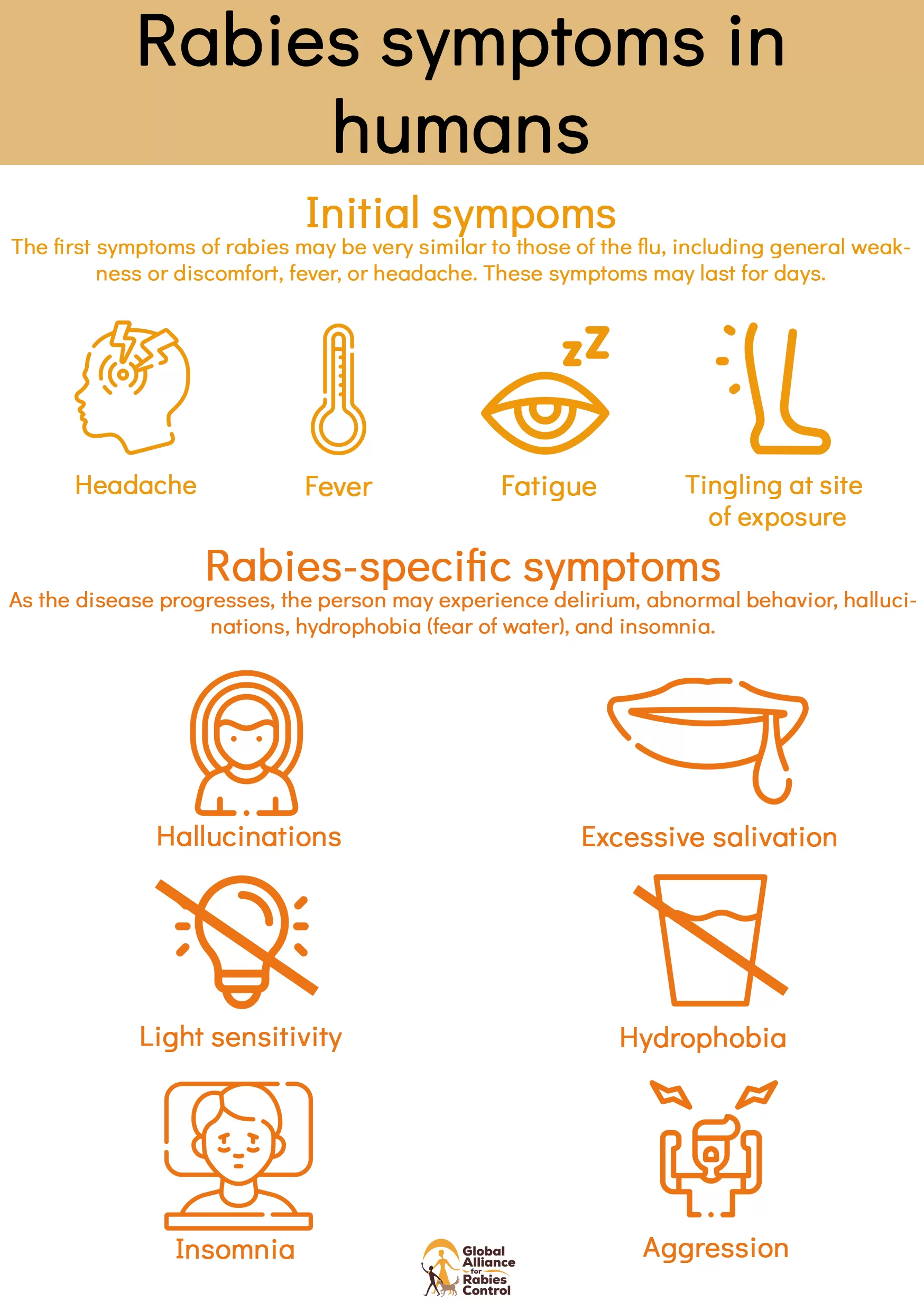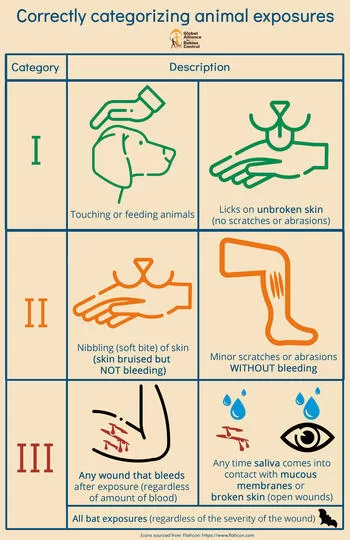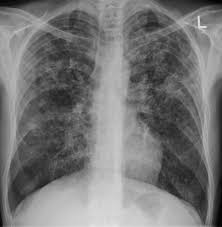This year’s World Rabies Day theme is: “Breaking Rabies Boundaries”.
28 September this year will mark the 18th World Rabies Day. This year’s “Breaking Rabies Boundaries” highlights that One Health is not for a selected few but for everyone.
Breaking Rabies Boundaries
The world has the vaccines, medicines, tools, and technologies to break the cycle of one of the oldest diseases. Together in unity we can eliminate rabies.
The World Rabies Day theme for 2024 is ‘Breaking Rabies Boundaries’, which was chosen to highlight the need for progress and moving beyond the status quo. Rabies control programmes offer a great example to operationalize One Health – building the structures and trust that are crucial to establish systems for other zoonotic diseases, including those that are pandemic-prone. This theme calls for innovative strategies and collaboration across various sectors and regions, highlighting the importance of integrating human, animal, and environmental health efforts. By breaking boundaries, we can overcome geographic, socio-economic, and educational barriers, ensuring widespread vaccination, awareness, and access to medical care. This unified approach is crucial in the fight against rabies, fostering a world where the disease is no longer a threat to both humans and animals.
This theme highlights the need for cross-sectoral and cross-border collaborations, bringing together governments, health organizations, veterinary services, and communities. In addition, there is a double meaning in the theme in that rabies itself does not recognize borders or boundaries and so it is a transboundary disease.
With the Zero by 30: Global Strategic Plan for the elimination of dog-mediated human rabies deaths by 2030 we have a shared global goal.
The theme further emphasizes the importance of equality and strengthening overall health systems by ensuring that One Health is not for a select few but rather something that should be available to everyone.
By collaborating and joining forces across sectors, engaging communities, and committing to sustain dog vaccination, together as 1 we can work towards 1 goal to eliminate 1 disease to make One Health available to all – using rabies as the example.
Key facts
- Rabies is a serious public health problem in over 150 countries and territories, mainly in Asia and Africa. It is a viral, zoonotic, neglected tropical disease that causes tens of thousands of deaths annually, with 40% being children under 15.
- Dog bites and scratches cause 99% of the human rabies cases, and can be prevented through dog vaccination and bite prevention.
- Once the virus infects the central nervous system and clinical symptoms appear, rabies is fatal in 100% of cases.
- However, rabies deaths are preventable with prompt post exposure prophylaxis (PEP) by stopping the virus from reaching the central nervous system. PEP consists of thorough wound washing, administration of a course of human rabies vaccine and, when indicated, rabies immunoglobulins (RIG).
- If a person is bitten or scratched by a potentially rabid animal, they should immediately and always seek PEP care.
- WHO and its global partners aim to end human deaths from dog-mediated rabies through a comprehensive One Health approach promoting mass dog vaccination, ensuring access to PEP, health worker training, improved surveillance, and bite prevention through community awareness.
Overview
Dog-mediated rabies
Rabies is a vaccine-preventable, zoonotic, viral disease affecting the central nervous system. In up to 99% of the human rabies cases, dogs are responsible for virus transmission. Children between the age of 5 and 14 years are frequent victims.
Rabies infects mammals, including dogs, cats, livestock and wildlife.
Rabies spreads to people and animals via saliva, usually through bites, scratches, or direct contact with mucosa (e.g. eyes, mouth, or open wounds). Once clinical symptoms appear, rabies is virtually 100% fatal.
The global cost of rabies is estimated to be around US$ 8.6 billion per year including lost lives and livelihoods, medical care and associated costs, as well as uncalculated psychological trauma.
Rabies is present on all continents except Antarctica. Globally there are an estimated 59 000 deaths from rabies annually; however, due to underreporting, documented case numbers often differ from the estimate.
Rabies, a neglected tropical diseases (NTD), predominantly affecting marginalized populations. Although effective human vaccines and immunoglobulins exist for rabies, these are often inaccessible or unaffordable to those in need.
As of 2018, the average estimated cost of rabies post-exposure prophylaxis (PEP) was US$ 108 (along with travel costs and loss of income), which can be a financial burden on those earning US$ 1–2 per person, daily.
Over 29 million people worldwide receive human rabies vaccine annually.
Rabies from sources other than dogs
In the Americas, where dog-mediated rabies is mostly controlled, hematophagous (blood-feeding) bats are now the primary source of human rabies. Bat-mediated rabies is also an emerging public health threat in Australia and parts of western Europe.
Human deaths following exposure to foxes, raccoons, skunks, and other wild mammals are very rare, and bites from rodents are not known to transmit rabies.
Contraction of rabies through inhalation of virus-containing aerosols, consumption of raw meat or milk of infected animals, or through organ transplantation is extremely rare.
Human-to-human transmission through bites or saliva is theoretically possible but has never been confirmed.
Symptoms
The incubation period for rabies is typically 2–3 months but may vary from one week to one year, depending on factors such as the location of virus entry and the viral load. Initial symptoms of rabies include generic signs like fever, pain and unusual or unexplained tingling, pricking, or burning sensations at the wound site. As the virus moves to the central nervous system, progressive and fatal inflammation of the brain and spinal cord develops. Clinical rabies in people can be managed but very rarely cured, and not without severe neurological deficits.
There are two forms of rabies:
- Furious rabies results in hyperactivity, excitable behaviour, hallucinations, lack of coordination, hydrophobia (fear of water) and aerophobia (fear of drafts or of fresh air). Death occurs after a few days due to cardio-respiratory arrest.
- Paralytic rabies accounts for about 20% of the total number of human cases. This form of rabies runs a less dramatic and usually longer course than the furious form. Muscles gradually become paralysed, starting from the wound site. A coma slowly develops and eventually death occurs. The paralytic form of rabies is often misdiagnosed, contributing to the under-reporting of the disease.
Diagnosis
Currently there are no WHO-approved diagnostic tools for detecting rabies infection before the onset of clinical disease.
Clinical diagnosis of rabies is difficult without a reliable history of contact with a rabid animal or specific symptoms of hydrophobia or aerophobia.
Accurate risk assessment is crucial for deciding on PEP administration.
Once symptoms emerge, and death is inevitable, offering comprehensive and compassionate palliative care is recommended.
Postmortem confirmation of rabies infection is done by various diagnostic techniques that detect whole viruses, viral antigens, or nucleic acids in infected tissues (brain, skin or saliva) (Laboratory techniques in rabies Vol. 1 and Vol. 2).
Where possible, the biting animal should be tested.
Prevention
Vaccinating dogs
Vaccinating dogs, including puppies, through mass dog vaccination programs is the most cost-effective strategy for preventing rabies in people because it stops the transmission at its source.
Culling free roaming dogs is not effective in controlling rabies.
Awareness
Public education for both children and adults on dog behaviour and bite prevention, what to do if bitten or scratched by a potentially rabid animal, and responsible pet ownership are essential extensions of rabies vaccination programmes.
Vaccinating people
Effective vaccines are available to immunize people both before and after potential exposures. As listed under the WHO – Prequalification of Medical Products, as of 2024, there are only 3 WHO pre-qualified human rabies vaccines available globally: RABIVAX-S by Serum Institute of India Pvt. Ltd., VaxiRab N by Zydus Lifesciences Limited, and VERORAB by Sanofi Pasteur.
Pre-exposure prophylaxis (PrEP) is recommended for people in high-risk occupations (laboratory workers handling live rabies and related viruses) and people whose professional or personal activities might lead to direct contact with infected animals (animal disease control staff and wildlife rangers).
PrEP might be indicated before recreation or travel in some areas, and for people living in remote, highly rabies-endemic areas with limited local access to rabies biologicals.
Note that PrEP does not replace the need for PEP. Any person exposed to a suspected rabid animal should still seek post exposure care.
Post-exposure prophylaxis (PEP) is the emergency response to a rabies exposure. This prevents the virus from entering the central nervous system. A well performed wound risk assessment and PEP protocol consists of:
- extensive wound washing with water and soap for at least 15 minutes soon after an exposure;
- a course of rabies vaccine; and
- administration of rabies immunoglobulin or monoclonal antibodies into the wound, if indicated.
Exposure risk and indications for PEP
Depending on the severity of exposure, administration of a full PEP course is recommended as follows:
| Categories of contact with suspect rabid animal | Post-exposure prophylaxis measures |
|---|---|
| Category I – touching or feeding animals, animal licks on intact skin (no exposure) | Washing of exposed skin surfaces, no PEP |
| Category II – nibbling of uncovered skin, minor scratches or abrasions without bleeding (exposure) | Wound washing and immediate vaccination |
| Category III – single or multiple transdermal bites or scratches, contamination of mucous membrane or broken skin with saliva from animal licks, exposures due to direct contact with bats (severe exposure) | Wound washing, immediate vaccination and administration of rabies immunoglobulin/monoclonal antibodies |
NB: Category II and III exposures require human rabies vaccination.
Vaccine quality
WHO recommends that all human rabies vaccines comply with WHO standards.
Deployment of poor-quality rabies vaccines has led to public health failures in several countries.
Vaccine administration – intradermal (ID) vs intramuscular (IM)
As detailed in the guidance on PEP administration, WHO recommends moving from intramuscular (IM) to intradermal (ID) administration of human rabies vaccines.
Intradermal administration reduces the amount of necessary vaccine and number of doses, therefore reducing costs by 60–80%, without compromising safety or efficacy.
Fewer doses also promote patient compliance with the recommended regimen.















